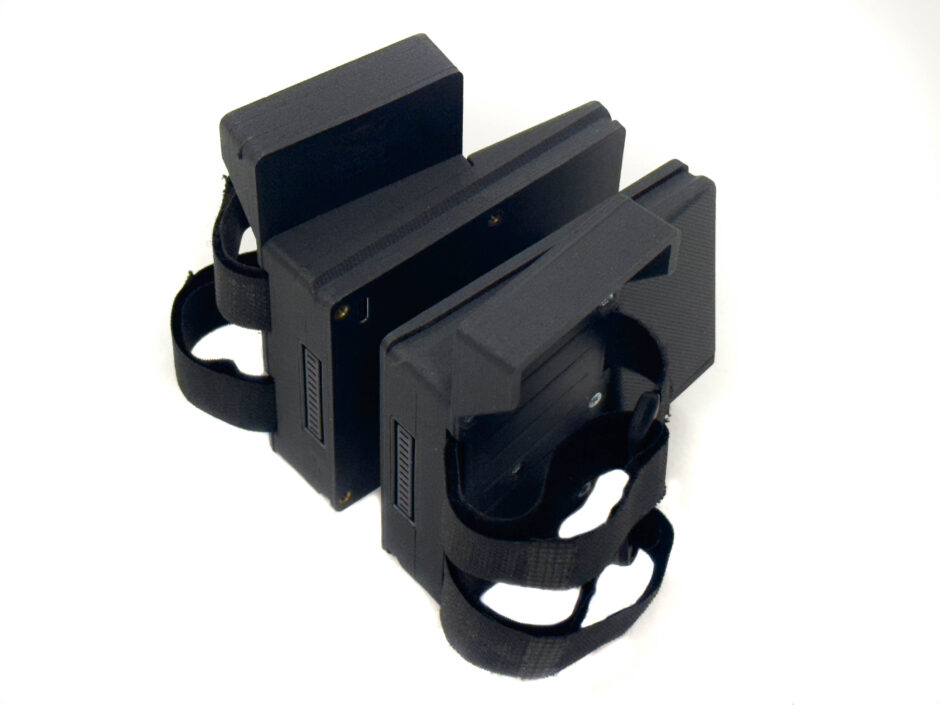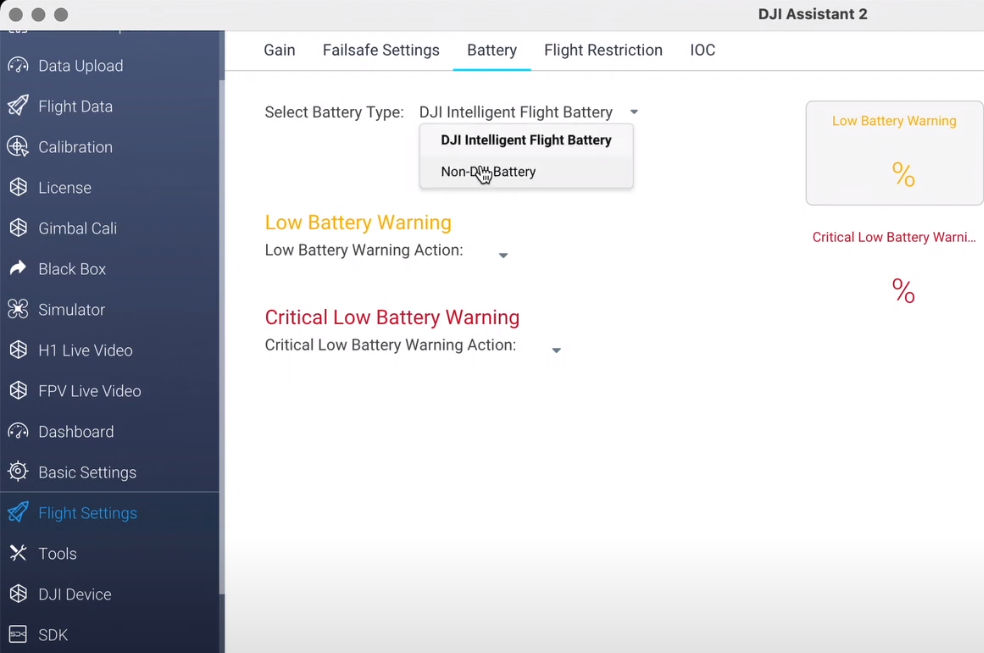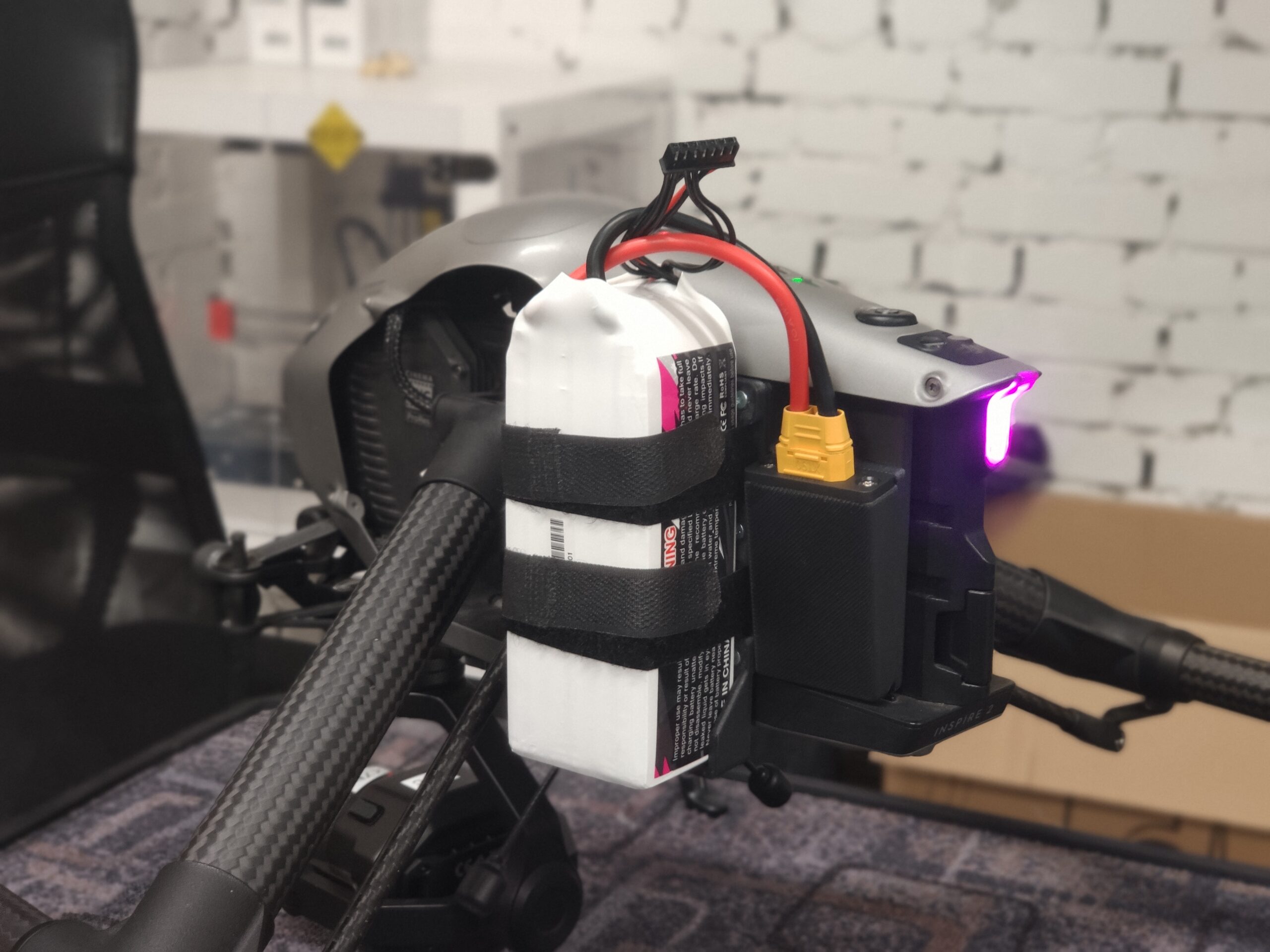- What is “caddy”?
- Why would you need one?
- Where did the project start
- Benefits
- Limitations
- How to use
- Protections
- FAQ
- Buy!

What is “caddy” anyway?
“Caddy” is essentially an adapter, enabling usage of standard LiPo batteries on Inspire 2 drone. It can “speak” Inspire 2 language and sends information about voltage etc in proper format enabling almost seamless usage of non-standard batteries on Inspire 2 drone
Why would you need one?
While for many people cost might be the most obvious reason (4000mah 6s LiPo prices start at around 50EUR) for us it was discharge rate – we wanted to fly more aggressively and original batteries did not provide enough power. Don’t get me wrong – TB50 is a great battery, but it is also a compromise between capacity, discharge rate and weight.
Where did the project start?
Many (if not all) Inspire 2 pilots have experienced the “power output limited to protect battery” warning. Reducing power mid-shot means screwing the shot. So for us the last straw was during filming of rally film “Legends of the winding roads”, where for the first time we did a lot of shots flying FPV style (with DJI Air Unit installed on Inspire 2) and as a result we were pushing much more. As a consequence of this we had to “reset to one” too many times because of strong headwinds (and while completely new batteries help a bit – it’s not always the case even then)…
So, the first and very simple version of caddy had the original BMS from TB50 inside a 3d-printed case 🙂
Benefits / Pro’s
- Power. TB50 has a discharge rate of a small potato and you simply cannot push it for too long – voltage sag is crazy. On the other hand, even with the cheapest 40C 4000mah LiPo I can go full throttle at 3.80V and sag is barely 0.2V, so I get a solid 10 minutes of flight time while being able to push to the max through the whole duration of a flight!
- Agility. Higher discharge rate means you can adjust internal parameters and make your Inspire a little more (a lot more?) agile and it is especially necessary if/when you will start flying your Inspire in FPV. You can even fly in “Manual” (Acro) mode if you’re brave enough! 🙂
- Safety. I know it sounds ridiculous – replacing an original piece of equipment with a DIY solution does not seem like something that might improve safety, but.. Biggest safety benefit for us so far – more power means less risk in demanding situations like flying from a moving ferry on the open sea. Going against the wind can trigger battery protection (“power output limited to protect batteries”) and if the captain is not kind enough to slow down and wait for the drone .. you’re screwed 🙂
- Cost. 40C 4000mah battery from CNHL is 50EUR – compare it to the original TB50, which is 160-180EUR..
Limitations / Con’s
- Weight. Using higher density LiPo (higher discharge rate inevitably means higher density) + using an adapter adds weight, so your drone will be heavier (check local regulations!)
- Charging. You will need standard LiPo chargers for your LiPo’s and if you’re used to DJI products .. that might feel intimidating in the beginning 🙂
- Some functions will not work as precisely and properly as with TB50, because we are not “authorized” and have to invent workarounds. For example, flight estimation in Inspire 2 is based on battery capacity and as this is variable (you can use any size that physically fits) it is not possible to give Inspire 2 proper flight estimation (we calculate it based on voltage, which is .. well .. guesstimate) 🙂
- You should NOT rely on “Smart RTH” – LiPo’s you’re using are not “smart” and consequently Smart RTH may fail you
- Self-heating that you enjoyed on TB50’s is not there anymore 🙁
- “Power” button will not function properly – you cannot turn off Inspire by pressing it and you can not put Inspire into “travel mode” while using caddies by pressing power button 4x times (as with caddies you turn on your Inspire like on “old-school” drones – by plugging in battery wires or sliding caddy in)
How to use
- First time use, procedure below you do only once:
- Power on Inspire 2, plug in USB-USB cable, change battery type “Non-DJI Battery” in flight controller using either older Assistant 1.1.2 (here’s instructional video how to enable “debug” mode on Mac / on PC) or you can use Drone-Hacks software, which you can download at website www.drone-hacks-com (note: PC only!). Just find parameter called “batt_type” and change it to “2”.
- Note – your “normal” TB50 will still work BUT!!! some protections may not be triggered (Smart RTH etc), so be careful, turn on “Show voltage” in Go4 app and observe numbers..

- Strap LiPo of your choice into caddy, plug cables in, check that balance plug is nicely tucked away
- Plug caddy into Inspire as you would do with regular TB50 and make sure there is at least 5mm gap between LiPo and propeller
- Go fly and create! 🙂
Protections
There are several level of protections built in and tested extensively, both software and hardware
- Hardware anti-spark protection
- Current sensor to monitor power consumption
- If you accidentally use 2 batteries with significantly different charge level you will get “0%” error on voltage screen for battery with lower voltage
- Even if onboard “microcontroller” will fail (blow up or burn) your drone will not fall down from the sky – you will have “N/A” error on battery screen yet you will still be able to come back and land (and you should do that as soon as possible, of course)
- While you can still enjoy Inspire’s original battery level protections (which are on the most part based on “SOC” – capacity %) we highly advise you to rely on voltage monitoring! Capacity % is just a guesstimate!
FAQ
- Flight time? Fully depends on batteries you’re using – theoretically you can use even something as small as 2000mah 6S LiPo’s if you want, less weight means more speed but obviously you will lose on flight time. 4000-4500mah you get safe 10+min flight time…
Buy!
Available at Kopterworx shop: https://www.kopterworx.com/inspire-2-lipo-caddy.html
